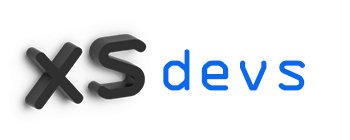Computers are complex machines that consist of various hardware components working together to perform different functions. Understanding the basics of computer hardware is essential for anyone looking to explore the world of computing. In this article, we will introduce you to the key components of computer hardware and their respective functions.
Table of Contents
- Introduction
- Central Processing Unit (CPU)
- Random Access Memory (RAM)
- Hard Disk Drive (HDD) and Solid State Drive (SSD)
- Motherboard
- Graphics Processing Unit (GPU)
- Power Supply Unit (PSU)
- Computer Peripherals
- Frequently Asked Questions (FAQs)
- Conclusion
1. Introduction
Computer hardware refers to the physical components that make up a computer system. These components work together to process, store, and display information. By understanding the functions of each component, you can gain a better grasp of how computers operate and make informed decisions when it comes to upgrading or troubleshooting.
2. Central Processing Unit (CPU)
The Central Processing Unit, or CPU, is often referred to as the “brain” of the computer. It performs the majority of the processing tasks and executes instructions. The CPU’s speed, measured in gigahertz (GHz), determines how quickly it can perform calculations and process data.
3. Random Access Memory (RAM)
Random Access Memory, or RAM, is the temporary storage space used by the computer to store data that is actively being used. It allows for quick access to data, which helps speed up the overall performance of the system. The more RAM a computer has, the more data it can handle simultaneously.
4. Hard Disk Drive (HDD) and Solid State Drive (SSD)
Hard Disk Drives and Solid State Drives are storage devices used to store data on a computer. HDDs use spinning disks and magnetic storage to store data, while SSDs use flash memory chips. SSDs are generally faster and more reliable than HDDs but tend to be more expensive.
5. Motherboard
The motherboard is the main circuit board that connects and allows communication between all the hardware components of a computer. It provides the necessary connections for the CPU, RAM, storage drives, and other peripherals. The motherboard also houses essential components such as the BIOS (Basic Input/Output System) chip.
6. Graphics Processing Unit (GPU)
The Graphics Processing Unit, or GPU, is responsible for rendering and displaying images, videos, and animations on the computer’s monitor. GPUs are especially important for gaming, video editing, and graphic-intensive tasks. They come in dedicated graphics cards or integrated into the CPU.
7. Power Supply Unit (PSU)
The Power Supply Unit, or PSU, provides the necessary electrical power to all the components of a computer. It converts the AC power from the wall outlet into DC power that the computer can use. The PSU’s capacity is measured in watts and should be sufficient to meet the power requirements of all the components.
8. Computer Peripherals
Computer peripherals are external devices that connect to the computer to enhance its functionality. Examples include keyboards, mice, printers, scanners, speakers, and monitors. These peripherals enable input, output, and interaction with the computer.
9. Conclusion
Understanding the components and functions of computer hardware is crucial for anyone looking to expand their knowledge of computers. By familiarizing yourself with the CPU, RAM, storage drives, motherboard, GPU, PSU, and peripherals, you will have a solid foundation to understand how a computer works and make informed decisions when it comes to hardware-related tasks.
10. Frequently Asked Questions (FAQs)
Q: What is the difference between a CPU and a GPU? A: The CPU is responsible for general-purpose processing tasks and executing instructions, while the GPU is specialized for rendering and displaying visual content, particularly graphics-intensive tasks.
Q: How much RAM do I need for my computer? A: The amount of RAM needed depends on the specific tasks you perform on your computer. For general computing, 8GB to 16GB of RAM is typically sufficient, but for demanding tasks like video editing or gaming, more RAM may be required.
Q: Can I upgrade the CPU in my computer? A: Upgrading the CPU depends on the compatibility of the motherboard and the specific socket type supported. Not all motherboards support CPU upgrades, so it’s important to check the specifications of your motherboard before attempting an upgrade.
Q: How do I choose between an HDD and an SSD for storage? A: SSDs are generally faster and more reliable than HDDs but come at a higher cost per gigabyte. Consider your budget, storage needs, and desired performance when choosing between the two. Many systems use a combination of both, with an SSD for the operating system and frequently accessed files and an HDD for bulk storage.
Q: What role does the BIOS play in a computer? A: The BIOS (Basic Input/Output System) is responsible for initializing the computer’s hardware components during startup. It performs a power-on self-test (POST) and loads the operating system into memory. The BIOS also provides settings and configurations that can be accessed through the BIOS setup utility.

